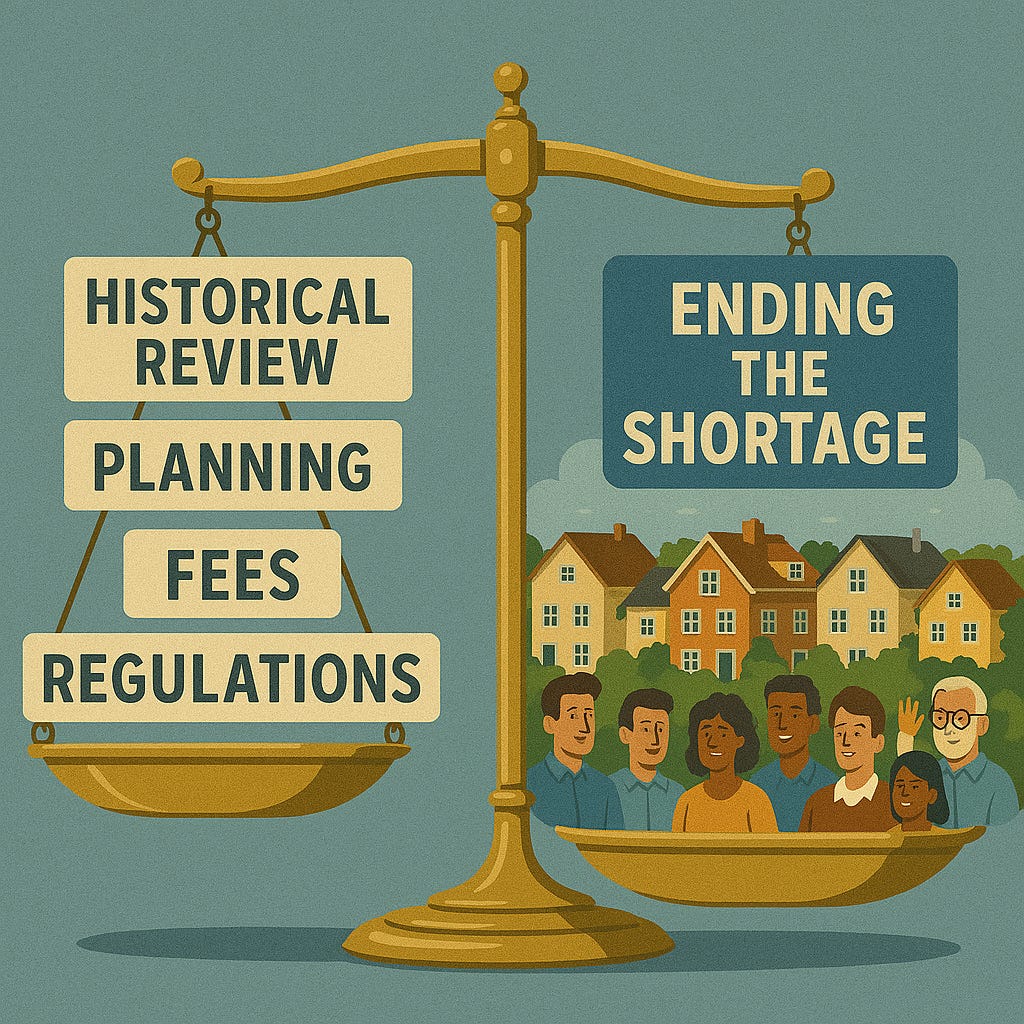Automatically Addressing a Housing Shortage
A model for writing an automatic response system into the law
If you’re a legislator who is serious about solving your city’s housing shortage, consider writing an automatic response system into your law.
Here’s how: pass an ordinance that defines when a shortage has become severe, unlocks temporary tools to accelerate housing construction, and automatically shuts those tools off once the shortage ends.
In other words: treat housing the way we treat other critical systems. If the power grid goes down, we don’t form a task force to study the pros and cons of repair, we aggressively work to restore it.
Here’s what your ordinance might look like:
1. Define the shortage
First, pick a metric. You need a clear signal that your city doesn’t have enough homes and that it’s time to act.
New York City uses a 5% vacancy rate as its benchmark: when vacancy falls below that, a housing emergency is declared. That’s not a bad starting point. Choose a number that makes sense for your city, and define who will measure it (perhaps a city department or a local university).
To avoid overreacting to blips, you might require two consecutive quarters of low vacancy before the ordinance kicks in.
2. Define your temporary tools
When a city falls into a housing shortage, it needs to move fast. Rules designed for stable times (lengthy planning processes, restrictive zoning, historical reviews) become untenable when there aren’t enough places to live.
Consider having your ordinance temporarily suspend or override those bottlenecks.
You might include:
• By-right approval for housing that meets basic criteria
• Expedited environmental and historical review
• Waivers or reductions of parking minimums, height limits, and other blockers
• Fast-tracked infrastructure upgrades for projects that add housing
• Lower permit and linkage fees to encourage development
• Shortened or removed public comment windows
• Automatic conversion approval for commercial to residential use
In short: take the shortage seriously and prioritize ending it above your normal concerns.
3. Define when the shortage ends
Once the vacancy rate returns to a healthy level — say, above 5% for two quarters — your emergency-style measures shut off automatically.
Why this works
It’s clear
Everyone knows what counts as a housing shortage. No endless debate. Either the numbers say we’re short on housing, or they don’t.
It’s fast
Instead of waiting for someone to “do something,” the response is automatic. The second the shortage hits the trigger, the housing flywheel starts spinning.
It aligns incentives
If city agencies or local commissions know they’ll lose power during a shortage, they’ll have every reason to speed up approvals and fix problems before the trigger hits.
It ends itself
Once the shortage resolves, the rules return to normal. No need for political courage or legislative clean-up.
In summary
If you want to solve a housing shortage, build a system that:
• Knows when it’s in one
• Equips itself to respond
• And knows when to stop
In a future post, I’ll share some specific policy tools Somerville could activate to pull itself out of our current housing shortage.





I appreciate not only this particular proposal, but the general spirit behind it. We need more rules that produce value for us in the long term, and which leverage our valuable brainpower now, without wiping the slate clean and starting over from zero in the future.